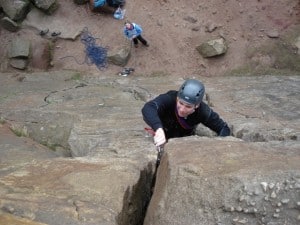
Placing gear on lead can seem daunting, but if you start off with easier climbs and build up you will make natural progress. One of the key elements of this is to feel solid and comfortable whilst selecting and placing gear wherever you are on the rock face and whenever opportunities present themselves. Be aware that if you place gear whilst established on a good ledge, there is a chance of hitting the ledge should you fall off just above it. You need to practice getting good balance and security whilst placing gear using smaller hand and foot holds. Placing gear can become enjoyable, trusting your own gear can enhance your experience of climbing and your confidence.
Ensure that when selecting and placing gear you do so one handed. There is a temptation when on a good ledge to use or test the gear with both hands, but this is folly, the gear could pop, you could overbalance and fall.
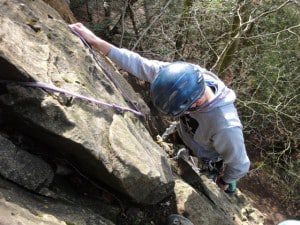
Good secure placements come with practice and experience, but it is always worth reading the manufacturers guidelines. There is a hierarchy of gear, the best being a sling around a solid Spike – check for tell tale cracks and give it a good thump with the heel of your hand feeling for vibrations. Always leave a long sling as it has less chance of lifting off, followed by Threads which are natural columns of rock attached to the rock which allow you to thread a sling through them, followed by Nuts or Wires and Hexes and finally Camming devices. These are last on the list because they work by forcing themselves apart and if the rock is fragile it might fail. Any placement is only as good as the person placing it.
You will often come across fixed gear on a trad climb. Natural rock threads often have bits of old tape or thin rope attached to them. Check the tape/rope for wear and colour fade, and, if possible, thread it with your own sling.
Other common forms of fixed gear are pitons, or pegs as they are more commonly known. These often look quite shiny and new, but shouldn’t be confused with bolts. They may be very old and often embedded only by a few mm’s so if possible back them up with other gear if possible. It is almost impossible to judge
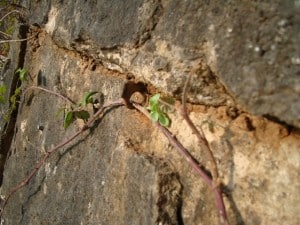
the age, length or condition of the peg inside the rock and may even have been placed on the first ascent. There will be occasions when there is nothing else, but be aware of the risks you are undertaking.
It is more likely that trad climbs warrant the use of two ropes, as the routes tend to wander their way up the rock face, usually following a natural line. This allows you to place gear to the left and right of you without causing rope drag. Double or half ropes as they are known are thinner than single ropes, around 8.6mm in diameter, 60m long and of two different colours to differentiate the two lines of gear and to aid communication with the belayer.
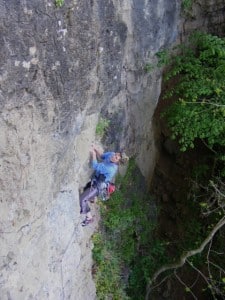
Rope management becomes very skillful, especially if the route traverses to the left and right, and it is essential to clip the right rope into the correct runner without crossing the ropes or creating drag.
Belaying using double ropes is equally difficult, and takes some time to acquire. The trick is to keep one hand on both dead ropes whilst taking in and paying out with the other hand.
If you decide that using a qualified and experienced Instructor rather than going it alone, or relying on the experience of friends, you will find you are able to build up your skills and confidence quite quickly in a safe and controlled manner. It is usual for a trad lead course to take at least 2 days – and this is just the start of your learning. See Calendar for available courses. Depending on your prior experience you may at first mock lead, where a belay is already set up at the top and you lead the route on a separate rope or ropes, placing and clipping your own gear, or some of your own gear and some preplaced by the Instructor.
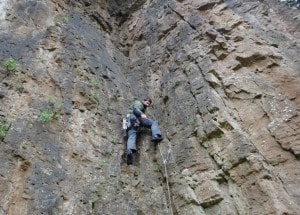
Your Instructor will be able to assess your ability and confidence and may encourage you to lead immediately with some strategic bits of gear placed for you to aim for, or she may set herself up on Jumars on a rope next to your climb,and assist with placements and check your gear as you place it. However you decide to develop your skills always try to do so in a safe and controlled manner and think how your actions may affect other crag users.